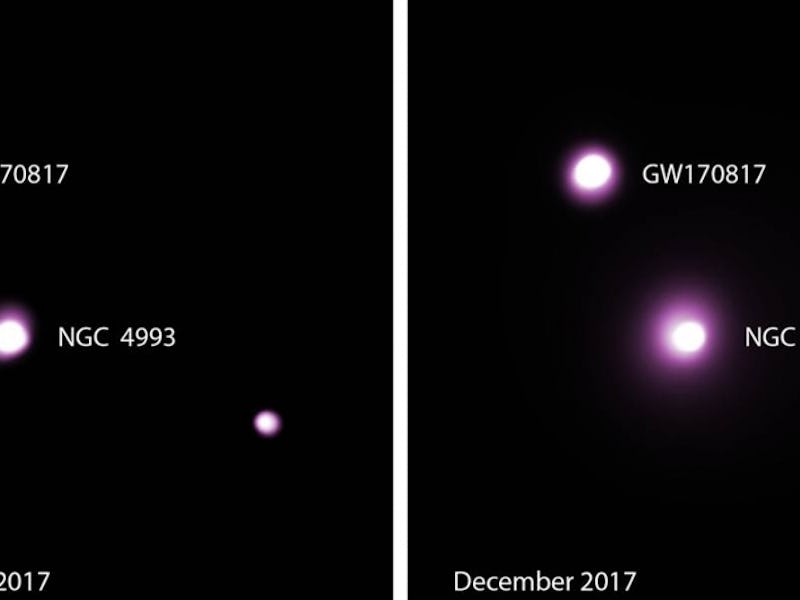
Last August, a collaboration between the Laser Interferometer Gravitational-Wave Observatory (LIGO) and the Virgo observatory in Italy detected gravitational waves from a neutron star merger that occurred about 138 million light-years away. New research suggests that the collision of these two collapsed star cores is still surprising scientists.
Observations from NASA’s Chandra X-ray Observatory, published Thursday in a study in Astrophysical Journal Letters, reveal how utterly unusual the aftermath of the event has been. The afterglow of the neutron star smashup in question has steadily brightened in recent months, and while researchers don’t have a concrete explanation for the change, they’ve got some pretty compelling ideas.
“Usually when we see a short gamma-ray burst, the jet emission generated gets bright for a short time as it smashes into the surrounding medium — then fades as the system stops injecting energy into the outflow,” the study’s co-author Daryl Haggard, an astrophysicist at McGill University, says in a statement. “This one is different; it’s definitely not a simple, plain-Jane narrow jet.”
NASA/CXC/McGill/J.Ruan et al.
The researchers have dubbed their leading hypothesis the “cocoon theory,” which, sadly, has nothing to do with caterpillar pods. According to this idea, the collision of the two neutron stars released so much energy that it triggered a jet — and a “cocoon” around it — that could glow in x-rays and radio light. That could explain the unusual observations from the Chandra X-ray Observatory.
“This neutron star merger is unlike anything we’ve seen before,” co-author Melania Nynka, a postdoctoral researcher at McGill, says in a statement. “For astrophysicists, it’s a gift that seems to keep on giving.”
This collision marked the first time gravitational waves were detected from a neutron star merger. Gravitational waves — which were first predicted by Albert Einstein in his theory of general relativity — are ripples in the fabric of space-time. Previous gravitational wave detections came from black hole collisions, but overall, detecting gravitational waves is an incredibly recent phenomenon. The first time one of these events was detected was by LIGO back in 2015.
Sure, this neutron star merger is one hell of a mystery. But you have to admit, it’s a pretty good one.